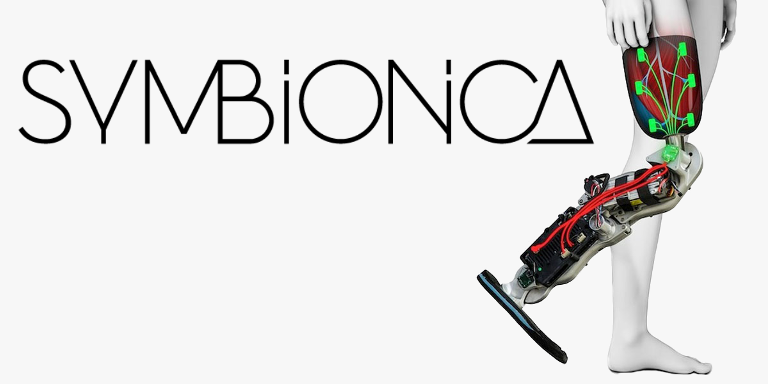In October 2015, ITI started work on an innovative new Horizon 2020 project called Symbionica, aimed squarely at the design and build of a cutting edge reconfigurable additive manufacturing platform to produce fully customizable smart prosthesis for the medical technology industry. ITI is working with a consortium of companies led by Sintea PLUSTEK, including: Ottobock, Medacta, University of Sheffield, Iris, SUPSI, Globotics, Irida, Framos, Prima Industrie, and Opi Photonics.
ITI is providing software and real time data processing through a Co-Engineering Platform, as well as implementing new functionality in CADfix to help with data processing at multiple stages of the Symbionica manufacturing process.
The project intends to provide new value added products and services to the medtech market, significantly improve customization levels, reduce production time and reduce costs of bespoke prosthesis.
Customizing Orthopaedic Implants
Currently, customization of prosthetics is limited due to cost and manufacturing techniques available to medical technologists. By utilizing new CAD, CAE, 3D printing and multi-material additive and subtractive manufacturing techniques in the production of prosthesis, new and more complex designs with a finer level of customization are possible, allowing doctors to provide implants which meet the specific needs of each patient.
As well as improving the design and fabrication of prosthesis, bionic sensors will be incorporated into the prosthesis to provide “through life” sensing systems. This will give extra feedback to medical professionals to help plan future design alterations of the implants and indicate whether further care, such as physiotherapy, could be needed for the patient.
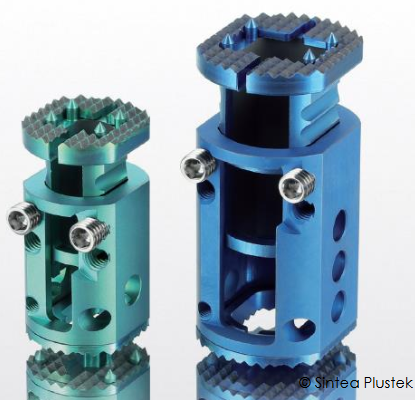
The workflow used in Symbionica is different to traditional prosthesis supply chains, as the CAD design process is brought into the manufacturing cycle rather than being a pre-cursor to manufacturing. By including the CAD in this way, the team minimizes costs by pre-empting the range of customizations up front. This allows resources to focus on providing cutting edge tools to provide the fine customization.
One such tool is the multi-function print head of the Symbionica machine which will support multi-material additive manufacturing and subtractive processing via an ablation laser. This will require complex toolpath design and optimization which will be implemented in the CADfix AM tool set.
There will also be a novel visioning system which will examine the printed implant layer by layer, comparing the print to the expected slice profile. If there are any adjustments to be made to the prosthesis on that layer, the multi-function print head will adjust the layer’s profile before the next layer is started, thus enabling an adaptive self-correcting printing process.
A single base design is created by the prosthetist for each implant needed which can then be perfected for each patient based on their needs.
The Symbionica Workflow
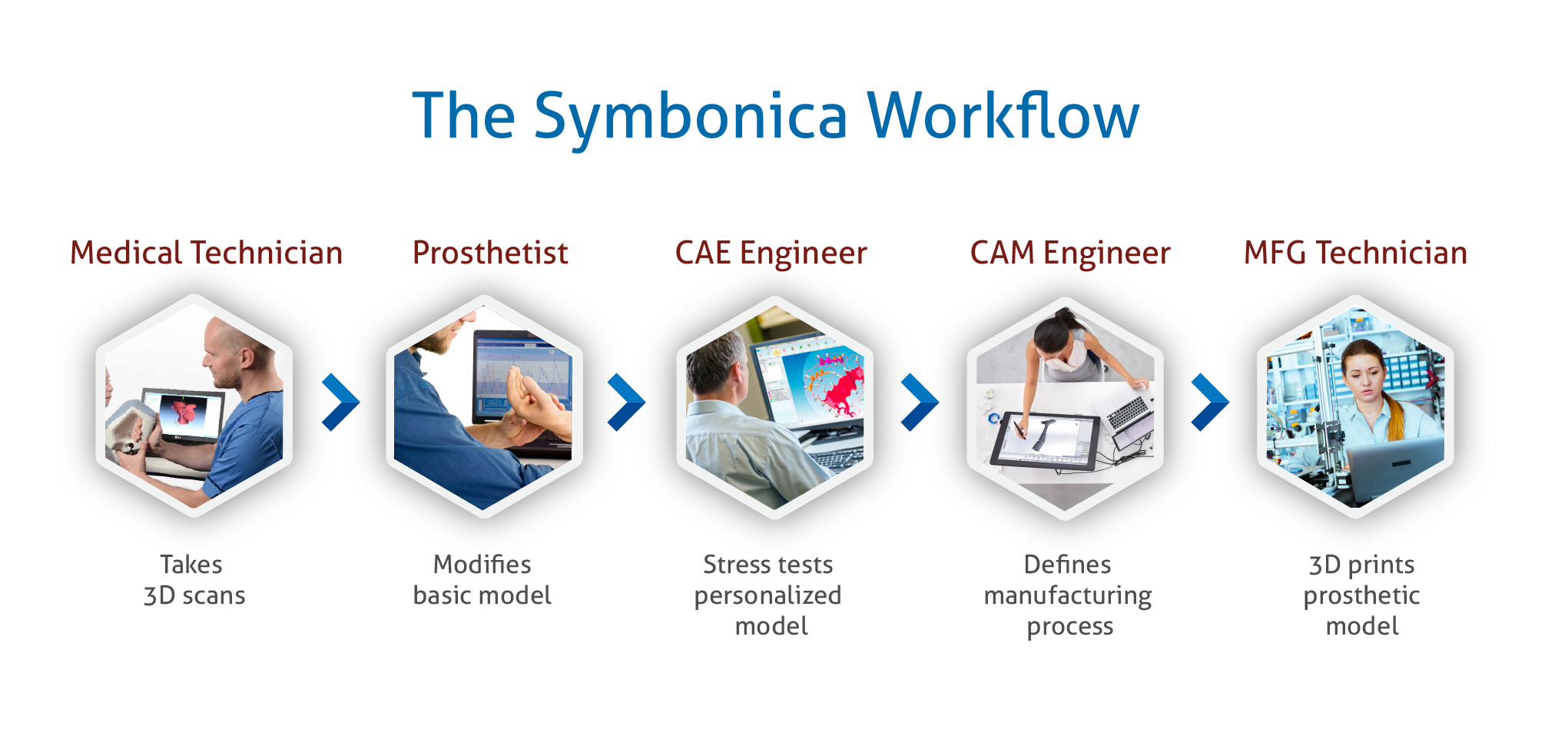
- Medical technician - Performs medical scans of the patient to start the manufacturing process. Chooses a base design of prosthetic to pass to the next step.
- Prosthetist - Responsible for personalizing the basic prosthetic design to fit the individual patient. They will take measurements from the patient's medical imaging obtained by the surgeon and use these to adapt a base implant design in a native CAD system.
- CAE Engineer - Once the prosthetist has adapted the CAD to the patient’s specific scan measurements, the CAE engineer will perform stress tests on the implant model to make sure the customization can withstand the stresses being placed on it by the patient. These results are fed back to the Prothetist at step 2 for design tweaks or passed onto the next user.
- CAM Engineer - The design is now ready to be manufactured. The CAM engineer decides how best to use the Symbionica machine, by defining build areas, slicing the provided CAD model, generating toolpaths, support structures for 3D printing and optimizing the CAD for the additive manufacturing process. AM data is generated and passed onto the next user.
- Manufacturing technician - Operating the Symbionica machine based on the given CAD and AM data from the CAM engineer. After the implant has been produced, the Manufacturing Technician will perform any necessary post-processing of the part, such as removal of support structures.
- Prosthetist - The finished prosthesis is passed back to the prosthetist for scanning, comparing back to the original CAD generated in step 1. When this validation is completed, the prosthesis can be fitted to the patient.
Co-Engineering Platform
With such a varied group of users needing to access the Symbionica Platform, the transfer and exchange of data between these members is critical to the success of the Symbionica Project. ITI’s data translation and exchange expertise provides a valuable Co-Engineering Platform which allows different users with various data requirements to seamlessly exchange data between each step of the project. The Co-Engineering Platform harnesses and improves tools for data interoperability in CADfix, while also adding a bespoke GUI design to control the flow of data from one step to the next.
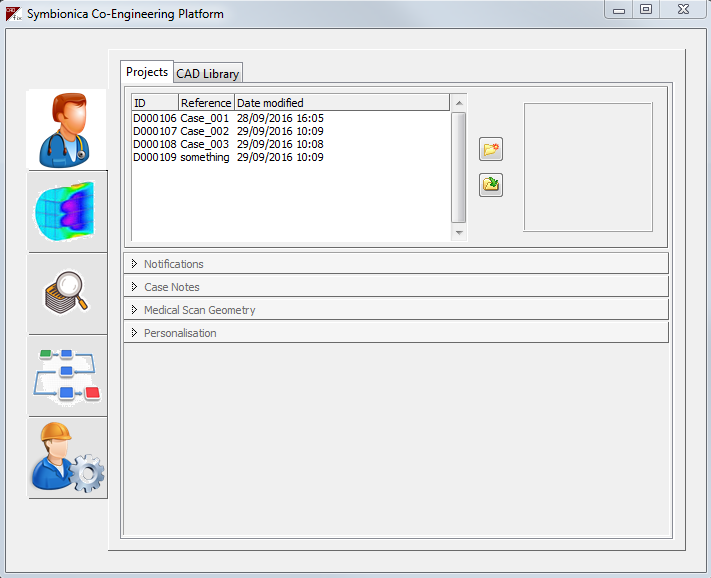
Innovative Additive Manufacturing
As well as utilizing the rich selection of data translation tools in CADfix, ITI will be providing a new selection of tools specifically designed for improving the quality of pre- and post-manufacture data.

Before machining the prosthesis, CADfix will be used to generate 2D slices of the customized part. It will then provide optimized toolpaths for each CAD slice.
In addition to providing customized tool path geometry based on common additive manufacturing techniques, we will be conducting research into the use of CADfix's 2D Medial Object Technology to create optimized variable radius paths to take advantage of the highly flexible Symbionica laser based deposition system.
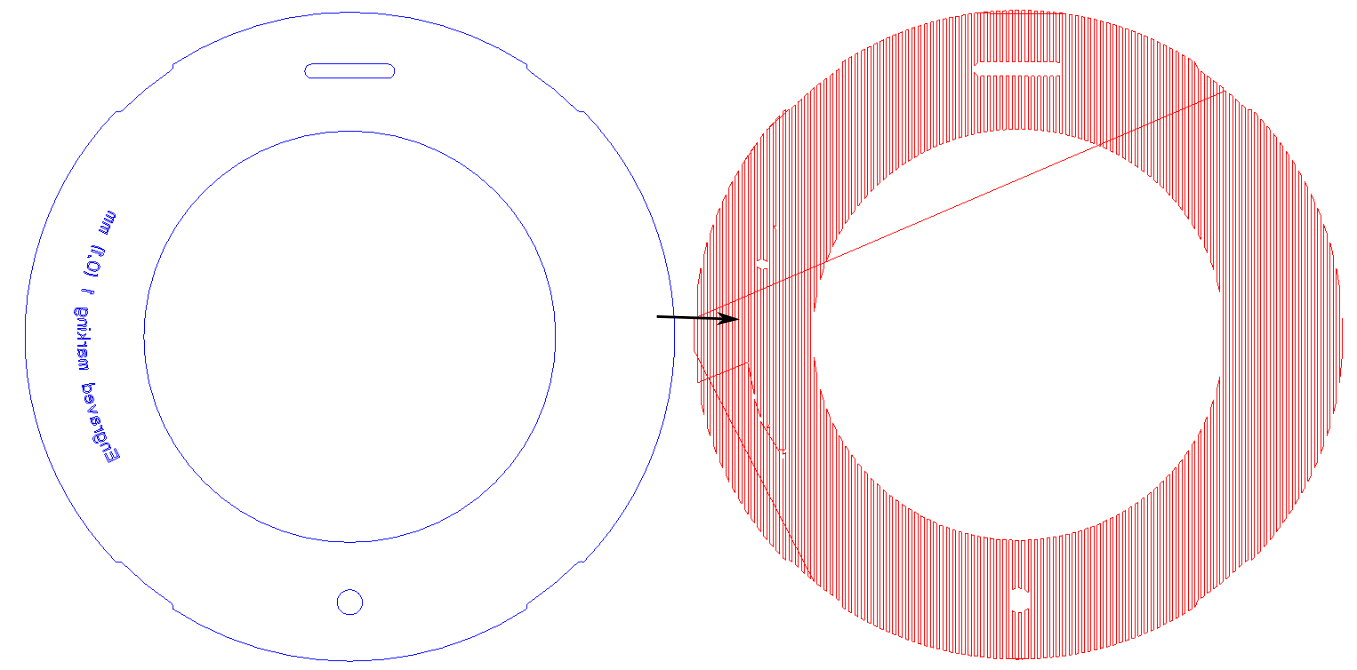
Constructing toolpaths from single slices of the parts to be built in Symbionica
Along with the innovative techniques being implemented for pre-manufacturing, ITI will be providing critical post-manufacturing data analysis. CADfix will compare point cloud scans of the machined prosthesis against the customized CAD. CADfix will then highlight areas of concern, alerting the user about any issues with the production of the implant.
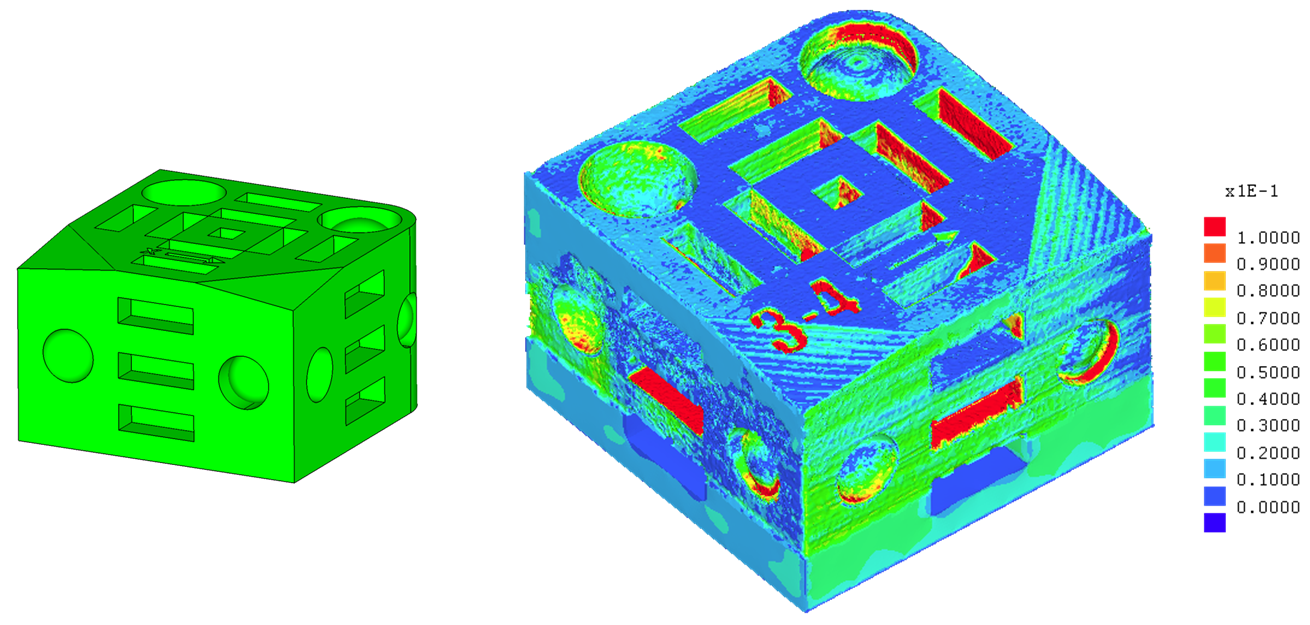
Measuring differences between original CAD and scanned 3D printed parts
The Symbionica project will run until the end of September 2018, at which time there will be a pilot of the machine. For more information on how you can use the technologies presented in Symbionica, 

